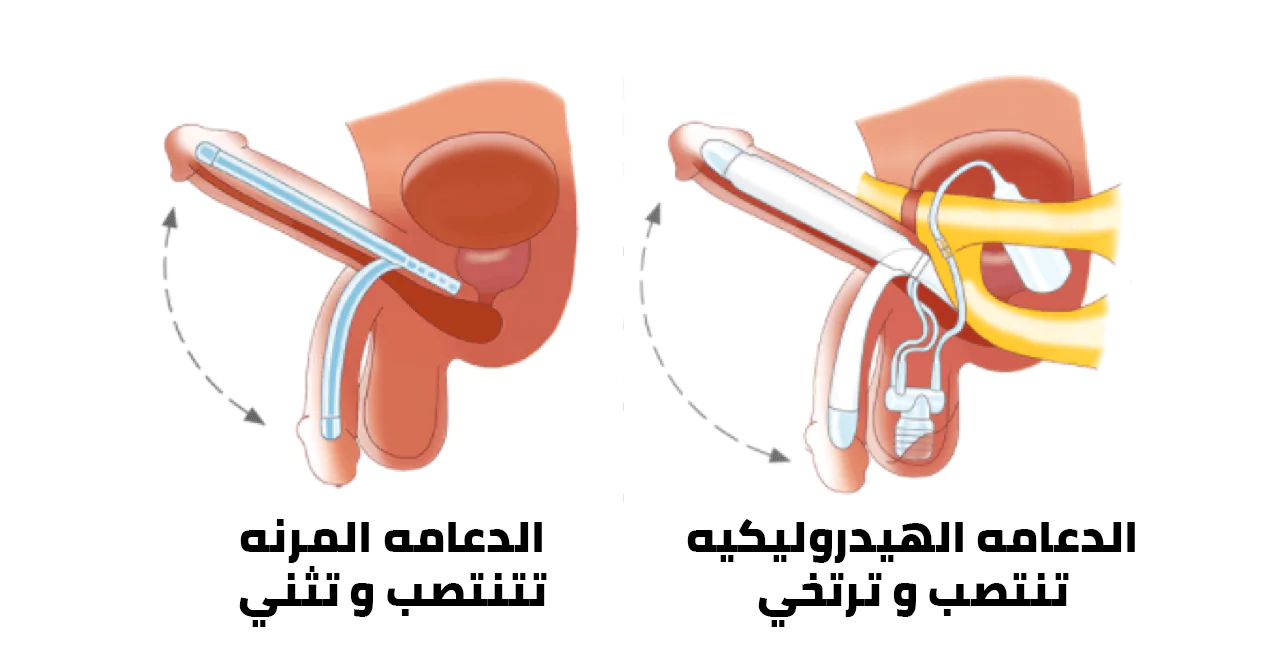
Have you tried all the erectile dysfunction treatments without any results?
Implant penile implants in the best specialized hospitals
A penile implant is a device placed inside the penis to enable men with erectile dysfunction (ED) to regain an erection. A penile implant is usually recommended after other treatments for ED have failed. There are two main types of penile implants: semi-rigid and inflatable, which are implanted through a minor surgical procedure. Each type of penile implant works differently and has advantages and disadvantages. For most men, ED can be successfully treated with medication or other treatments such as P-Shot and shockwave therapy. You may consider a penile implant if you are not a candidate for available treatments or have been unable to achieve an erection sufficient for sexual activity using other methods. A penile implant can also be used to treat severe conditions that cause scarring within the penis, leading to curved erections and pain (Peyronie’s disease).
Types of Penile Implants at Victoria Clinic
-
1- Inflatable implants
This is the most common type of penile implant, allowing for erections and reducing their size at other times. The three-piece inflatable implant uses a fluid-filled reservoir implanted under the abdominal wall, a pump and release valve implanted inside the scrotum, and two inflatable cylinders inside the penis. To achieve an erection, fluid is pumped from the reservoir into the cylinders, and the valve inside the scrotum is then released to return the fluid to the reservoir. The two-piece model works similarly, but the reservoir is part of the pump implanted in the scrotum.
-
2- Semi-rigid bars
Semi-rigid devices are permanently fixed. The penis can be bent away from the body for sexual activity or pointed toward the body for concealment. A localized penile implant is a semi-rigid device with a central series of fixed segments and a spring at each end. Other special designs are available that provide increased length or accommodate a shortened penis. Some inflatable penile implants are also available with antibacterial coatings, which help reduce the risk of infection.

What should you know about penile implant surgery?
Keep in mind that penile implants help men achieve an erection, but they do not increase sexual desire or sensation.
Most penile implants will not make the penis any larger than it naturally is after surgery.
In fact, the erect penis may be slightly shorter than it was before.
Penile implant surgery
Penile implant surgery is typically performed in a specialized hospital in Istanbul. Your doctor may recommend general anesthesia (to make you unconscious during surgery) or spinal anesthesia (to prevent pain in the lower body).
-
1- During surgery
A tube (catheter) may be inserted into the bladder through the penis to collect urine during surgery.
The surgeon makes an incision under the head of the penis, at the base of the penis, or in the lower abdomen.
The surgeon then expands the spongy tissue inside the penis, which normally fills with blood during an erection.
This tissue is located inside two hollow chambers known as the corpora cavernosa.
The surgeon selects the appropriate implant size and places the cylinders inside the penis.
All sizes are customized based on precise body measurements.
If the implant is a two-piece inflatable device, the pump and valve are implanted inside the scrotum.
If the device is a three-piece device, the surgeon implants a fluid-filled reservoir under the abdominal wall through an internal incision.
Once the device is in place, the surgeon sutures the incisions.
The surgery typically takes between 45 minutes and an hour.
-
2- After surgery
After surgery, you may need to take pain medication.
Mild pain will last for a few weeks.
You may need to take antibiotics for a week to prevent infection.
Your doctor will provide clear instructions on when to resume normal activities.
Most men can return to strenuous physical activity and sexual activity four to six weeks after surgery.
During this period, your doctor may recommend inflating and deflate the implant twice daily to help you adjust to it and stretch the tissue surrounding the cylinders.
